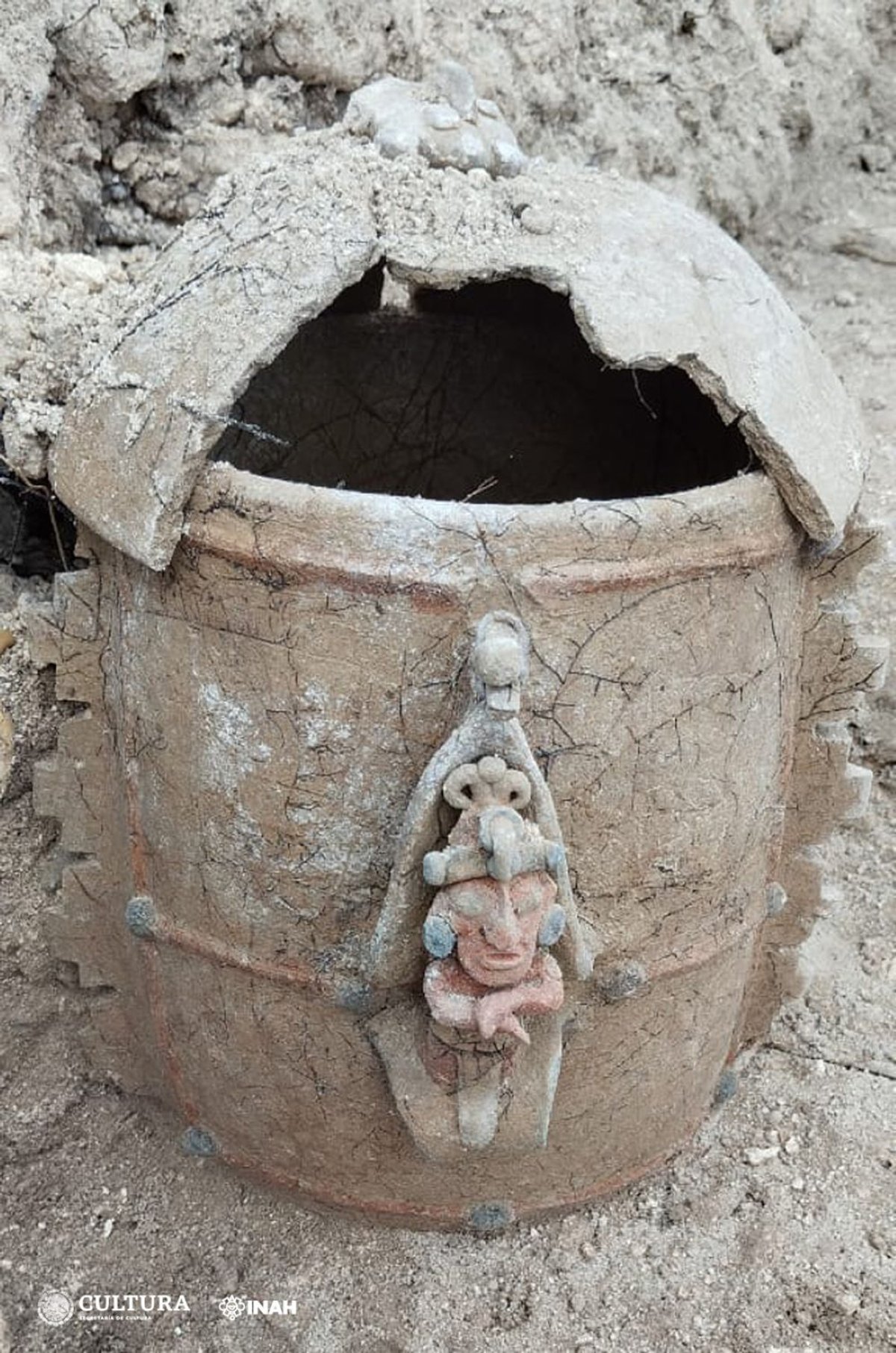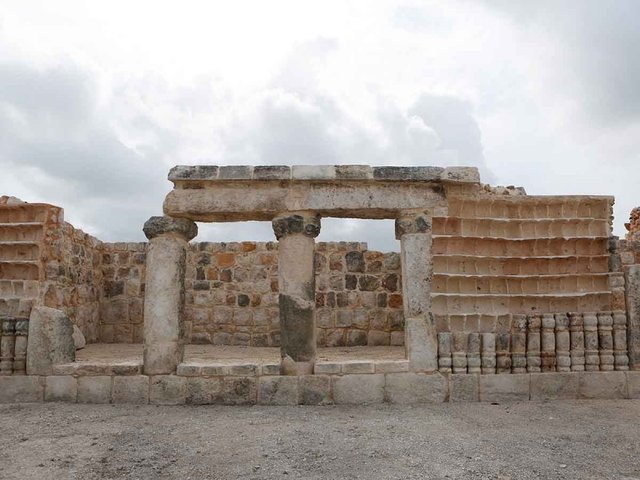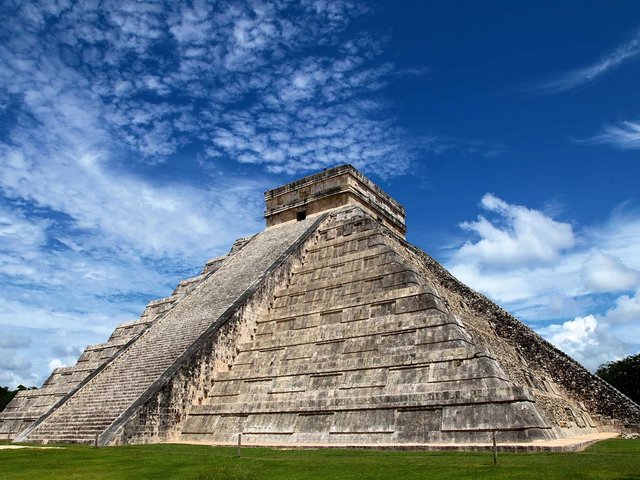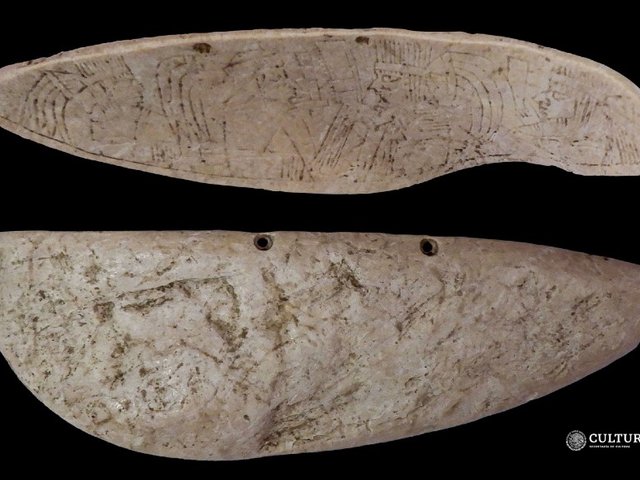Archaeologists from the National Institute of Anthropology and History (INAH) have made a significant discovery during ongoing construction of the Maya Train project, a 966-mile intercity railway traversing Mexico’s Yucatán Peninsula whose first section was inaugurated last month.
Specialists located a funerary urn depicting the Mayan god of corn in the Paakztaz style native to the Bec River area. The artefact dates to the Classic era, a pre-Hispanic period between 680CE and 770CE. At a press conference on 8 January, the INAH's general director Diego Prieto Hernández described it as “a raw clay pot that contains the mortal remains of a person”.
The vessel is thought to be half of a pair, leading archaeologists to suspect that it was originally constructed as a foundational offering. It is decorated with glyphs of the Mayan symbol “ik”, a reference to the wind and its divine characteristics, as well as a a small anthropomorphic figure constructed from pastilles, a reference to the deity “in his representation as an ear of corn in the growth stage”, according to the INAH.

The two recently discovered Maya funerary urns Instituto Nacional de Antropología e Historia
The lid of the urn is adorned with an owl icon, considered a harbinger of doom and war during the Classic period. Thought to be both symbols of good luck and visual metaphors for death, owls are considered guides to the afterlife in Mayan culture. The second vessel in the pair is covered with the thorns of a ceiba tree, flora long regarded as sacred by the Mayan people.
Archaeologists have reported finding similar sculptures of the corn deity on the island of Jaina, a pre-Colombian Maya archaeological site and artificial island off the coast of the Yucatán gulf that once served as a necropolis for elites. The name “Jaina” roughly translates to “Temple in the Water”, and the island contains more than 20,000 graves, only 1,000 of which have been excavated to date.
The years-long construction of the Maya Train project has been a boon for archaeological finds in the region, yielding thousands of artefacts and immovable objects, along with the rediscovery of the city of Ichkabal, which opened to the public in August of 2023. But the infrastructure project has faced challenges, too, including its cost tripling and opposition over its impact on the region's environment and the very same archaeological treasures it is intended to make easier of access.






